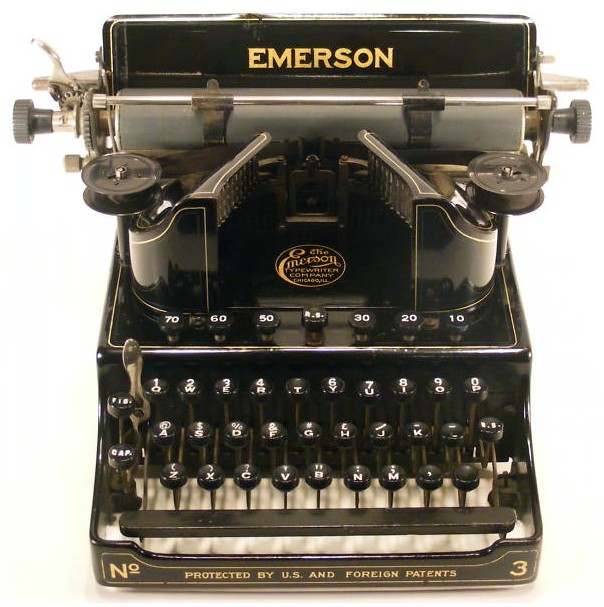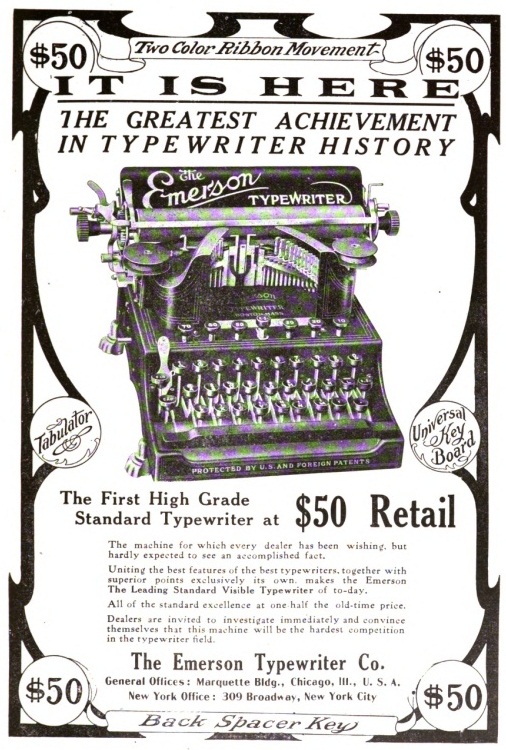Why You’ve Never Heard of the Emerson Typewriter
The Emerson is quite a handsome machine, wouldn’t you say? Rather sleek and modern if you were shopping for a typewriter around the second decade of the twentieth century. It was created by the prolific inventor Richard W. Uhlig (he held more than 500 patents, most of them for typewriters) and were made beginning in 1909 in Momence, Illinois, a town 50 miles south of Chicago.
A three bank, “visible” machine (you can see what you’ve typed while you’re typing it) with a back-space key (not all had them at this time), The Emerson also had an interesting typebar design (they swung across from the side so they’re facing the page). The price was right, too. It was advertised as a $50 machine “that compares in every particular with all the so-called $100 machines.” There was immediate demand for it and everything suggested that Emerson would become a major player in the typewriter revolution of this era.
However, the Momence plant was inadequate and time was wasted searching for a new location to build a bigger facility. For reasons relating mostly to bad planning (the members of Emerson’s management team were champion ditherers), it took many months to find a location to build a much bigger manufacturing plant.
Meanwhile demand far exceeded supply and the business was soon on life support. In 1910 the company was purchased by Richard W. Sears, of the Sears Roebuck & Co. family, who moved the factory to Woodstock, Illinois. His colleague, Alvah C. Roebuck, took over the day-to-day running of the business. At first, the shareholders voted to rename it the Roebuck Typewriter Company, but then the name was changed to Woodstock Typewriter Co. Most of the Emerson-branded machines made in Woodstock are marked “No. 3” until they were all rebranded the “Woodstock.”
Production of the Emerson ended in 1914. The Woodstock continued being produced, under different owners although not in nearly the quantities of the Big Four (Remington, Underwood, Royal, and L.C. Smith), until the 1970s. If you could find an original Emerson today, it would be an antique curiousity, like a candlestick telephone.

